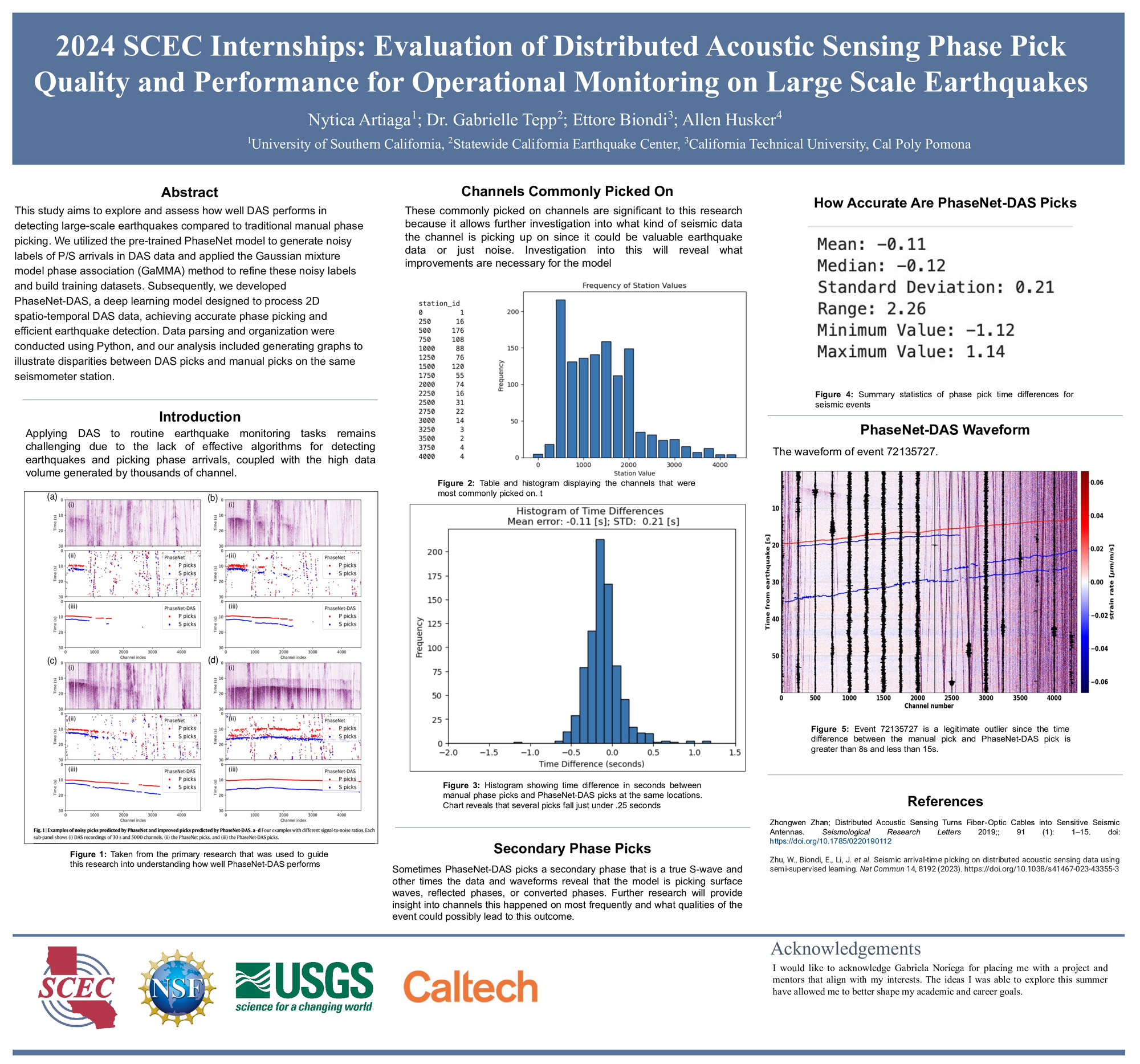Group B, Poster #220, Research Computing (RC)
Evaluation of Distributed Acoustic Sensing Phase Pick Quality and Performance for Operational Earthquake Monitoring
Poster Image:

Poster Presentation
2024 SCEC Annual Meeting, Poster #220, SCEC Contribution #13991 VIEW PDF
Distributed Acoustic Sensing (DAS) is an emerging technology for earthquake monitoring and subsurface imaging given its ability to convert existing telecommunication fiber cables into dense seismic arrays. However, its distinct characteristics, such as unknown ground coupling and higher noise levels compared to conventional seismometers, pose challenges to standard signal processing routines. Existing machine learning models optimized for conventional seismic data struggle with DAS data due to its ultra-dense spatial sampling and limited manual labels. To address this need, PhaseNet-DAS was introduced as a phase picker for DAS data that makes use of the thousands of channels to optimize picking. It was trained on picks made with the PhaseNet picker, developed for conventional seismic data, and has not been trained on or compared with manual analyst picks. Recent studies testing PhaseNet-DAS have shown great potential for real-time earthquake monitoring, but that is yet to be explored. This study aims to explore and assess how well PhaseNet-DAS performs compared to manual phase picking and how the introduction of DAS data may help with regional seismic monitoring. While PhaseNet-DAS can leverage data from the entire DAS array, PhaseNet-DAS taveltime picks made on 18 specific DAS channels for 230 earthquake events were compared to picks made by trained earthquake analysts at the Southern California Seismic Network. We examined the number of phase picks made, the time difference and accuracy of picks between PhaseNet-DAS and analyst picks, and explored which channels were picked on more frequently with the most accuracy and smallest time difference. Although analysis continues, thus far we have concluded that most DAS picks are on average within 0.1s of manual picks. DAS picks are generally later than manual picks, although sometimes the picks are earlier. The results also show that picks were primarily made on the 9 studied channels closest to the interrogator (within ~50 km) with an average of 13 picks made per earthquake event. We did find some outliers and DAS reporting picks on secondary phases. This data is easily distinguishable and disregarded when necessary.












